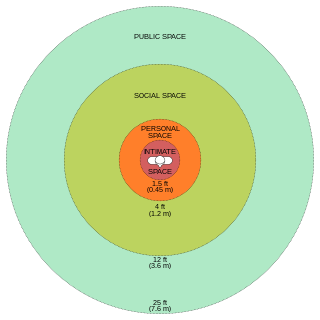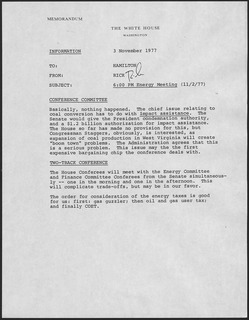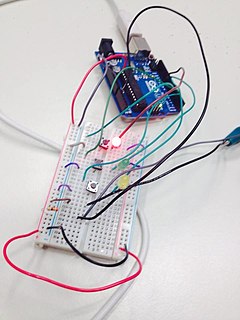Related Research Articles
Abstraction in its main sense is a conceptual process wherein general rules and concepts are derived from the usage and classification of specific examples, literal signifiers, first principles, or other methods.

A data model is an abstract model that organizes elements of data and standardizes how they relate to one another and to the properties of real-world entities. For instance, a data model may specify that the data element representing a car be composed of a number of other elements which, in turn, represent the color and size of the car and define its owner.
Software design is the process by which an agent creates a specification of a software artifact intended to accomplish goals, using a set of primitive components and subject to constraints. Software design may refer to either "all the activity involved in conceptualizing, framing, implementing, commissioning, and ultimately modifying complex systems" or "the activity following requirements specification and before programming, as ... [in] a stylized software engineering process."
A model is an informative representation of an object, person or system. The term originally denoted the plans of a building in late 16th-century English, and derived via French and Italian ultimately from Latin modulus, a measure.
Visual rhetoric is the art of effective communication through visual elements such as images, typography, and texts. Visual rhetoric encompasses the skill of visual literacy and the ability to analyze images for their form and meaning. Drawing on techniques from semiotics and rhetorical analysis, visual rhetoric expands on visual literacy as it examines the structure of an image with the focus on its persuasive effects on an audience.

In research design, especially in psychology, social sciences, life sciences and physics, operationalization or operationalisation is a process of defining the measurement of a phenomenon which is not directly measurable, though its existence is inferred by other phenomena. Operationalization thus defines a fuzzy concept so as to make it clearly distinguishable, measurable, and understandable by empirical observation. In a broader sense, it defines the extension of a concept—describing what is and is not an instance of that concept. For example, in medicine, the phenomenon of health might be operationalized by one or more indicators like body mass index or tobacco smoking. As another example, in visual processing the presence of a certain object in the environment could be inferred by measuring specific features of the light it reflects. In these examples, the phenomena are difficult to directly observe and measure because they are general/abstract or they are latent. Operationalization helps infer the existence, and some elements of the extension, of the phenomena of interest by means of some observable and measurable effects they have.

An entity–relationship model describes interrelated things of interest in a specific domain of knowledge. A basic ER model is composed of entity types and specifies relationships that can exist between entities.
An outline, also called a hierarchical outline, is a list arranged to show hierarchical relationships and is a type of tree structure. An outline is used to present the main points or topics (terms) of a given subject. Each item in an outline may be divided into additional sub-items. If an organizational level in an outline is to be sub-divided, it shall have at least two subcategories, as advised by major style manuals in current use. An outline may be used as a drafting tool of a document, or as a summary of the content of a document or of the knowledge in an entire field. It is not to be confused with the general context of the term "outline", which a summary or overview of a subject, presented verbally or written in prose. The outlines described in this article are lists, and come in several varieties.

A memorandum is a written message that is typically used in a professional setting. Commonly abbreviated "memo," these messages are usually brief and are designed to be easily and quickly understood. Memos can thus communicate important information efficiently in order to make dynamic and effective changes.
A conceptual model is a representation of a system. It consists of concepts used to help people know, understand, or simulate a subject the model represents. It is also a set of concepts. In contrast, physical models are physical objects, such as a toy model that may be assembled and made to work like the object it represents.
Critical design makes aspects of future physically present to provoke a reaction. "Critical design is critical thought translated into materiality. It is about thinking through design rather than through words and using the language and structure of design to engage people ..". It is related to the critical theory and the Frankfurt School.
An Online Writing Lab (OWL) is often an extension of a university writing center. Online writing labs offer help to students and other writers by providing literacy materials, such as handouts and slide presentations. Writers may also submit questions electronically for feedback. Many OWLs are open to people unaffiliated with the specific institution. Online writing labs play an important part in writing center assistance by allowing writers to use some of the center's resources remotely.
Difference is a key concept of philosophy, denoting the process or set of properties by which one entity is distinguished from another within a relational field or a given conceptual system. In the Western philosophical system, difference is traditionally viewed as being opposed to identity, following the Principles of Leibniz, and in particular, his Law of the identity of indiscernibles. In structuralist and poststructuralist accounts, however, difference is understood to be constitutive of both meaning and identity. In other words, because identity is viewed in non-essentialist terms as a construct, and because constructs only produce meaning through the interplay of differences, it is the case that for both structuralism and poststructuralism, identity cannot be said to exist without difference.
Scientific writing is writing for science. English-language scientific writing originated in the 14th century, with the language later becoming the dominant medium for the field. Style conventions for scientific writing vary, with different focuses by different style guides on the use of passive versus active voice, personal pronoun use, and article sectioning. Much scientific writing is focused around scientific reports, traditionally structured as an abstract, introduction, methods, results, conclusions, and acknowledgments.
Daniel P. Raymer is an aerospace design engineer widely recognized as an expert in the fields of aircraft conceptual design, design engineering, aircraft configuration & layout.

The following outline is provided as an overview of and topical guide to the visual arts:
The engineering design process is a common series of steps that engineers use in creating functional products and processes. The process is highly iterative - parts of the process often need to be repeated many times before another can be entered - though the part(s) that get iterated and the number of such cycles in any given project may vary.
A system is a group of interacting or interrelated elements that act according to a set of rules to form a unified whole. A system, surrounded and influenced by its environment, is described by its boundaries, structure and purpose and expressed in its functioning. Systems are the subjects of study of systems theory and other systems sciences.
A critical lens is a way of looking at a particular work of literature by focusing on style choices, plot devices, and character interactions and how they show a certain theme. It is a common literary analysis technique.

Critical making refers to the hands-on productive activities that link digital technologies to society. It was invented to bridge the gap between creative, physical, and conceptual exploration. The purpose of critical making resides in the learning extracted from the process of making rather than the experience derived from the finished output. The term "critical making" was popularized by Matt Ratto, an associate professor at the University of Toronto. Ratto describes one of the main goals of critical making as a way "to use material forms of engagement with technologies to supplement and extend critical reflection and, in doing so, to reconnect our lived experiences with technologies to social and conceptual critique." "Critical making", as defined by practitioners like Matt Ratto and Stephen Hockema, "is an elision of two typically disconnected modes of engagement in the world — "critical thinking," often considered as abstract, explicit, linguistically based, internal and cognitively individualistic; and "making," typically understood as tacit, embodied, external, and community-oriented."
References
- ↑ Lab, Purdue Writing. "Stage One: Conceptual Design // Purdue Writing Lab". Purdue Writing Lab. Retrieved 2022-06-08.